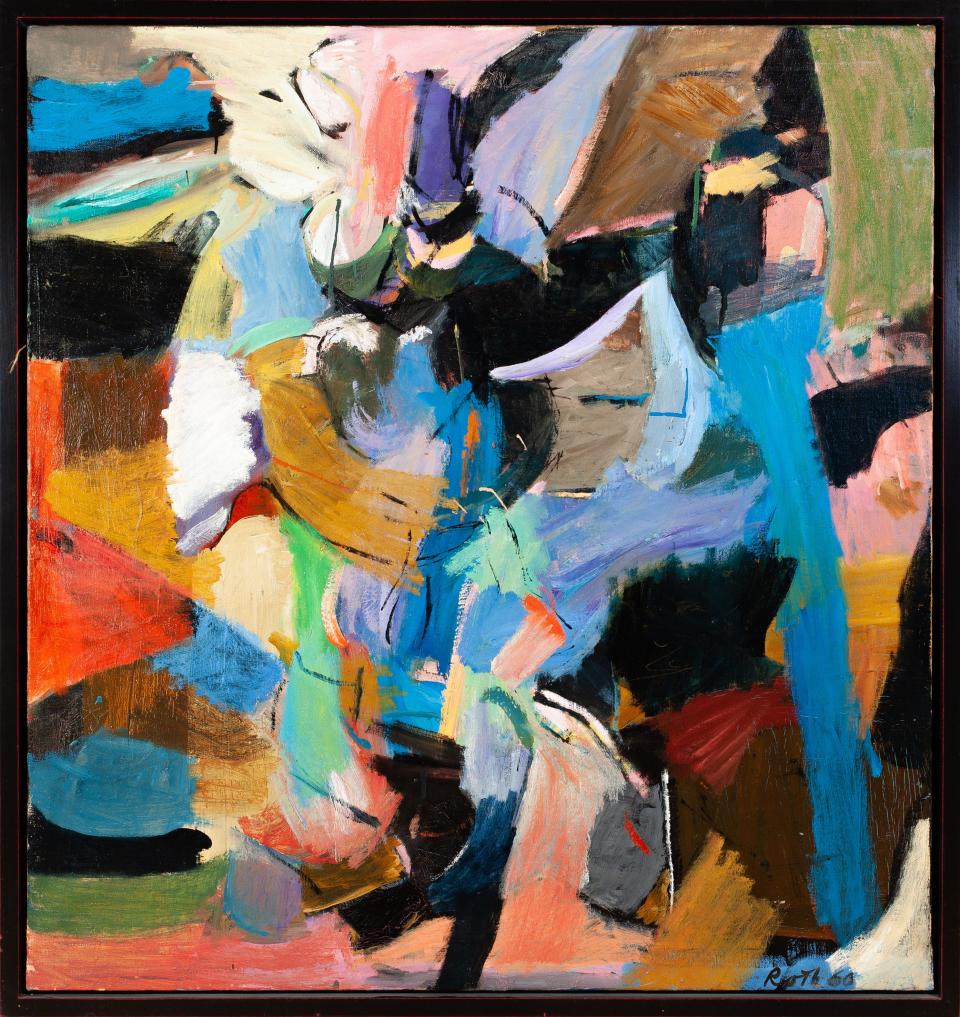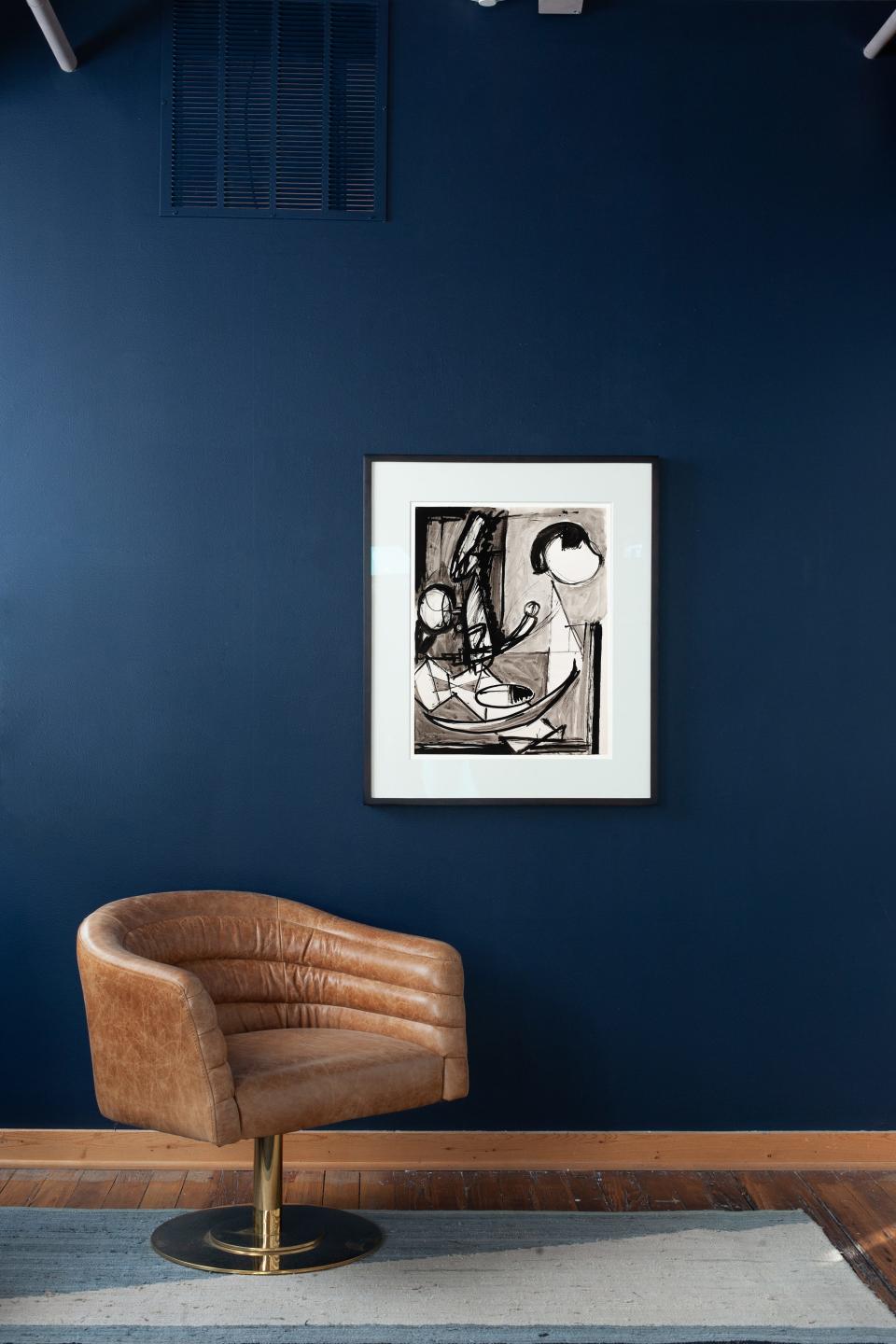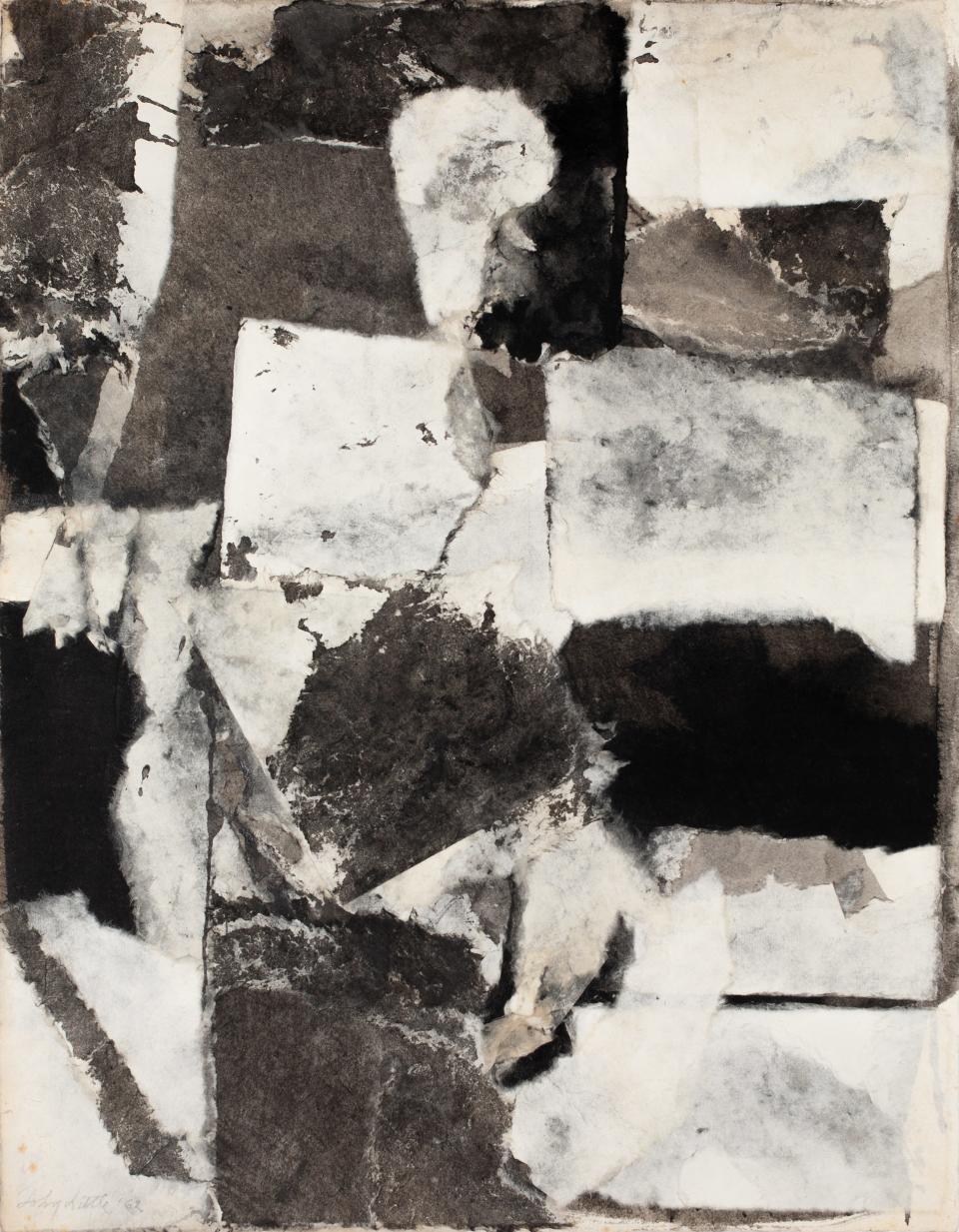Sager Reeves Gallery Masters Exhibit cedes spotlight to unsung greats

- Oops!Something went wrong.Please try again later.
Step slowly, studiously across the hardwood floors of Sager Reeves Gallery and aspects of its current Masters Exhibit make their presence felt.
Stopping before John Little's immense oil painting "Yaphank," you feel enveloped. Yet a sensation grows — that you could stay with the piece 100 hours, and this oracle would still have secrets to share, in marks and paint drips and confluences of color.
Step into the room housing Jack Roth's Pop art-assemblages and a transgressive, electric charge travels the length of your nerves.
Bear witness to sacred geometries each artist discovered through the use of color and collage, and a sense of your own connectedness arises.
Hannah Reeves recognizes qualities like these and something more: "quiet dedication."
This steadiness is close to the heart of the Masters Exhibit, which recurs each December with a different set of artists, mid-20th-century aces whose greatness too often goes unsung.
More: Columbia's Sager Reeves Gallery adopts new name, furthers creative direction
The talents Sager Reeves underlines eschew each end of a stereotypical spectrum. Neither scene darlings nor starving artists, they belong to a wide middle class of independent spirits who just kept creating, whether or not the acclaim arrived.
Little and Roth fit the bill, moving through New York City schools and adding to the growth of abstract expressionism while never becoming household names.
"What I think is just admirable — it makes me smile when I think about these career artists — is I think these are two folks who saw a little bit of fame, had some wonderful exhibitions, had some amazing peers surrounding them and then just put their heads down and kept painting. Real career professional artists," said Reeves, the gallery's director and co-owner.
Colorful conversation

Gallery staff grew their awareness of Little's and Roth's career arcs and the subtle changes in their respective catalogs over time, Reeves said. Points of sympathy and similarity between the two revealed themselves.
"We started to see some — not parallels. If I’m picturing lines, the lines are actually waving in and out of each other," Reeves said.
Each artist's work speaks across the gallery to the other, covering varied subjects, including color, Reeves said. Both Little and Roth studied with fascinating figures, absorbing their ideas about color and its application. Little worked with Hans Hoffmann; Roth with Mark Rothko.
Both teachers imparted a sense that color could create mood and dimension like an orthodox landscape painting, even absent traditional representation. Little ranks as the student who carried Hoffmann's ideas furthest, Reeves said. And that progress is displayed here, in compositions where masses of color become their own landmarks.
More: Columbia Art League encourages viewers to give artistic gifts
Roth extended Rothko's ideas, which focused more on the viewer than the maker, Reeves said. His work can plumb the depths of a particular blue, as in a later "Untitled Diptych" from 1981; or render miniature color fields as part of a more complex collage.

"There are some interesting spots, even just physically in the gallery, where I think you get to notice their color work," Reeves said. "But especially this kind of floating of one field of color next to each other."
Material matters

Common interests and distinct personalities also come through in the artists' evolving relationships with materials. Little maintained a real continuity and confidence in his work, Reeves said, while adapting the role paper played in a composition.
With certain collage pieces, paper became a more active element, not merely a substrate, she said.
Roth delved into 3-D assemblage while sustaining his 2-D work. Pieces within the exhibit gather materials ranging from paperback books and electric lights to nude images copied and pasted from magazines, as well as Roth's own pocket diploma from his MFA program at the University of Iowa.
More: Columbia Christmas gift guide: Local gifts for the book lover on your list
Introducing materials consumed by mass audiences — such as magazine photos — enabled Roth to comment on cultural mores related to distribution, working definitions of popularity and the collective gaze, Reeves said.
Pausing to consider Roth's working environment at a moment where found objects formed his palette, Reeves imagined piles of possibility.
"I picture Jack Roth’s studio totally changing as an environment in the ‘60s," she said. "He must have just been surrounded by magazines and this imagery."

Reeves expressed an appreciation for the steadfastness of these artists, saying they reminded her of artist-professors who live and make in Columbia without great fanfare, but possessing truly thoughtful, faithful natures.
The width and depth of Little's and Roth's interests also sparks fascination. Little, who died in 1984, was an experienced opera singer and created his own textile design firm. Moving to New York's Hamptons in the '50s, he cultivated a love for gardening; Reeves recalled the testimony of a family member who said Little tended his plants with the same affection and vibrancy as his paintings.
Roth, who died in 2004, earned seven degrees across three fields of study, and taught math at several colleges and universities; still, he kept up a remarkable body of work, Reeves said.
If time or fate had granted the opportunity, Reeves would have relished the chance to exist like a fly on studio walls, watching each artist at work. Seeing how Roth gathered and sifted materials for his collages and assemblages would speak to one of her curiosities.
“I would love to see Little working especially on these really large canvases, and to see him step back, to see him exhaust himself for the day on this big surface — and then to come back to it," Reeves added. "To interact with a layer that’s half-dry or completely dry. Did that mean he had something across the room that he had to switch to, because of the drying times with this thick, thick oil paint? I wish I could just be in the room and watch, more than anything.”
The Masters exhibit remains on display through December. Learn more at https://sagerreevesgallery.com/.
Aarik Danielsen is the features and culture editor for the Tribune. Contact him at adanielsen@columbiatribune.com or by calling 573-815-1731.
This article originally appeared on Columbia Daily Tribune: Sager Reeves Gallery Masters Exhibit cedes spotlight to unsung greats

